A Map of Wolverhampton, England
Enjoy a glimpse of history through old images of Wolverhampton, in the West Midlands, England, UK.
Old Map of Wolverhampton
A map of Wolverhampton published in 1751 shows us the locations of pretty formal gardens, orchards and fields, the Workhouse, the Quakers Meeting Rooms.
There are also illustrations of St Peter's Church and the Church.
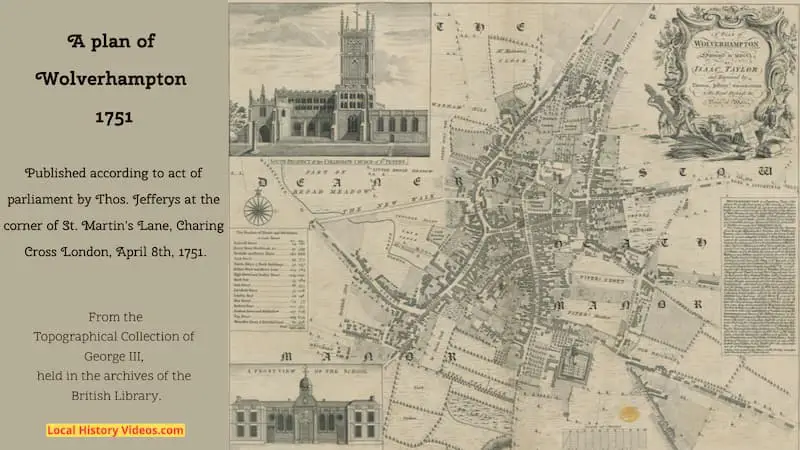
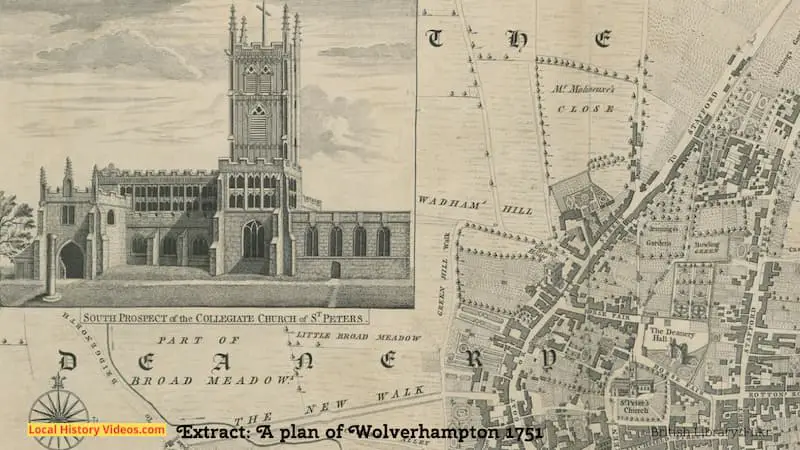
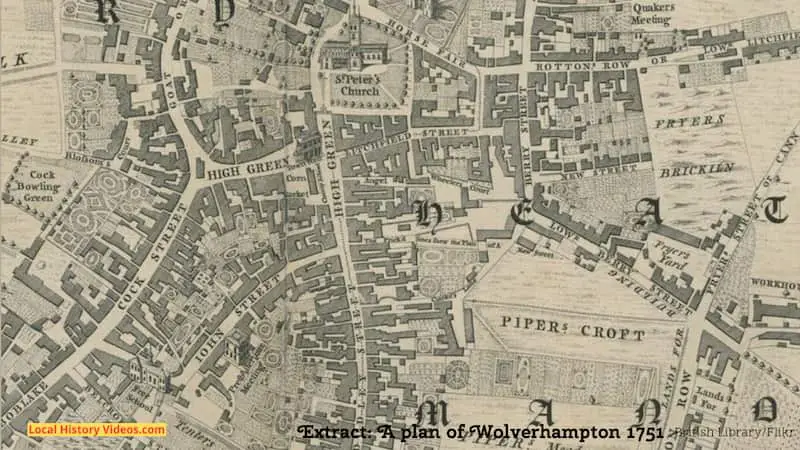
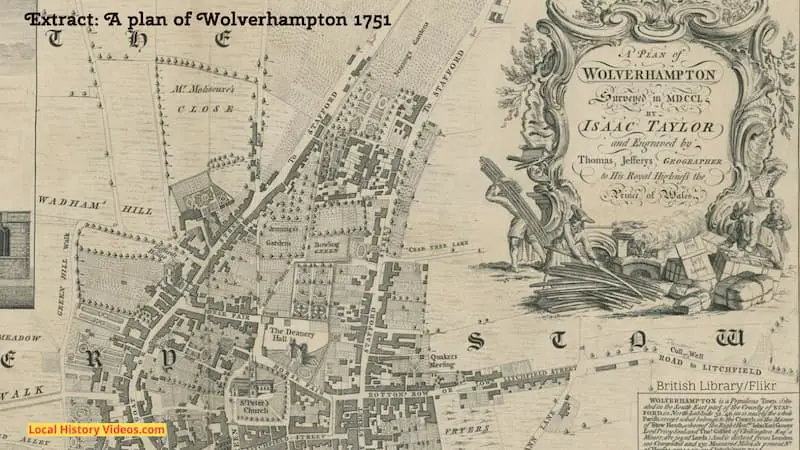
The historic map above includes a table which is hard to read, so I've recreated it here:
Wolverhampton 1751 Houses Inhabitants
Belcroft Street 24 160
Berry Street Workhouse &c 91 399
Boblake & Barns Street 180 888
Cock Street 43 175
Courts Alleys & Back Buildings 32 237
Bilston Street & Manor Lane 114 784
High Green & Dudley Sreet 214 1032
Horse Fair 55 264
John Street 66 335
Litchfield Street 37 228
London Row 29 148
New Street 14 77
Rottons Row 112 527
Stafford Street & Middle Row 127 718
Tup Street 209 854
Worcester Street & Brickhill Lane 69 428
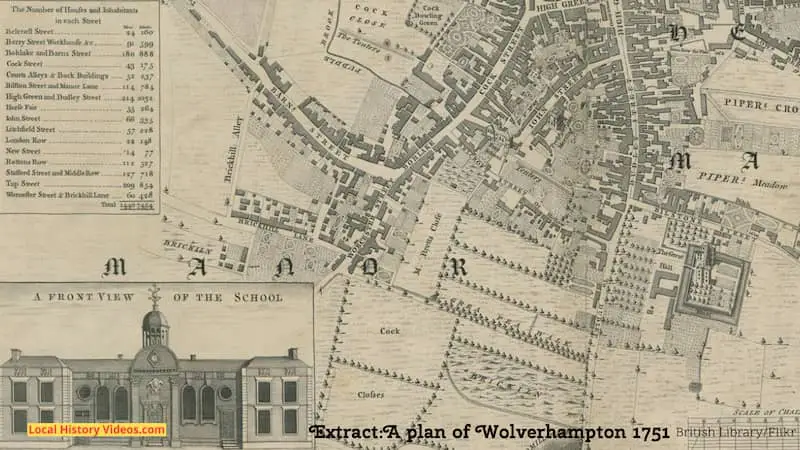
The historic map also includes a paragraph about Wolverhampton in 1751.
It's too small to read so I've written it up here, changing the fs for s, adding punctuation to improve readability, but leaving the old fashioned spelling in place.
From
"A Plan of Wolverhampton 1751"
Wolverhampton is a populous town situated in the South East part of the County of Stafford, in North Latitude 32, 40 (as is nearly the whole parish except what belongs to the Church in the Manor of Stow Heath, whereof the Right Honorouble John Earl Gower Lord Privy Seal and Thomas Gifford of Chillington Esq, a minor, are joint Lords). And is distant from London 100 Computed and 130 Measured Miles. Its present number of houses are 1,440, and inhabitants 7,454.
This town was first called Hanton by the Saxons from its high situation, then Hamton and Wulfrune's Hamton, and so Wolverhampton from the Princess Wulfrune its owner, a daughter or sister to King Ethelred who came to the crown in 979.
Here she founded a Collegiate Church for a Dean, and seven Prebedaries. an Official, and other inferior Officers etc. To each of these eight she gave a power over his own lands equal to that of any Lord of the Manor, and to the Dean the same power in spiritual matters as any Bishop enjoyed, making the whole Body and Parish subject to him and him subject to no man's visitation except that of the King or Lord Keeper of the great Seal. Under him Edward the Confessor made it one of his Royal free Chapels, and Edward IV in 1477 annext the Deanery to that of Windsor.
The present magnificant church except the chancel was built by that great man Hubert Walter, Archbishop of Canterbury, perhaps born here, about the year 1200. He also built proper houses round about it for the Dean and Prebendaries etc, all which are long since gone to ruin. But the Deans was rebuilt by Mr R. Guest; who farmed the Excise of Oliver Cromwell and the Chancel by a voluntary subscription collected by the Reverend Mr. Allenstree since that time.
In 1258 Henry III granted to the Dean a market on Wednesdays and a Fair on the 29th June, the Church being dedicated to St Peter. But tradition says they were granted by King John his father.
The free School was founded by Mr Stephen Jennings born here, who was Lord Mayor of London in 1509, the Government and Choice of the Masters he gave to the Worshipful Company of the Merchant Taylors of which he was a Member. In 1714 they built the present handsome Fabrick for a school and houses for the two Masters.
At present it has 1 Church and 3 Meeting Houses, for Roman Catholicks, Quakers, and Prebyterians, all which will not contain one fifth part of the Inhabitants, a Charity School for 50 boys and 40 girls.
The Iron Manufacture and Toy Trade, in gold, silver, brass, mother of pearl etc are here carryed on as also at Willenhall and Bilston in this Parish after the same manner as at Birmingham, Walsal etc.
King John bestowe the Manor on the Archbishop some time before the Building of St Peter's Church.




Comments
Post a Comment